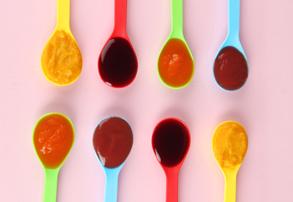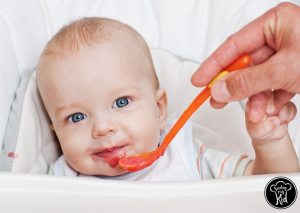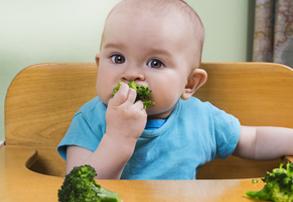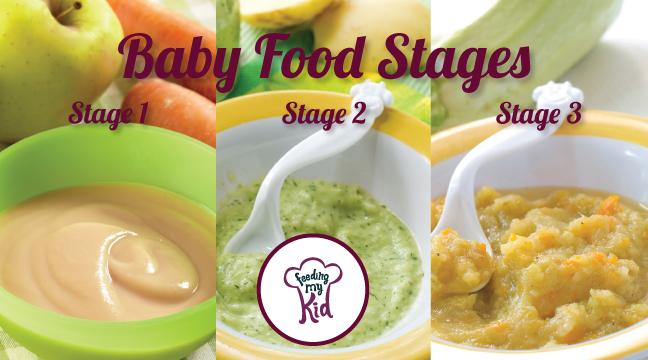 I had no idea what Baby Food Stage 1, 2 or 3 meant!
I had no idea what Baby Food Stage 1, 2 or 3 meant!
There are three kinds of consistencies when it comes to pureed food. You’ve probably seen on commercially prepared baby food where it says Stage 1, Stage 2 and Stage 3 foods on the labels. That refers to the texture of the food
Baby Food Stages
This image is a great reference for the different stages of baby food. Bab
Stage 1 means the food is puréed until it is an ultra fine, almost watery texture. This preparation has the least amount of texture.
Stage 2 has more texture to the puree. This is where you will stop pureeing the food before it turns ultra fine.
Stage 3 generally has a lot more texture and/or food chunks in it.

Start Adding Texture To Your Baby’s Food
Research shows babies who stay on thin purees too long can struggle to transition to different types of textures. It is important to add texture to your baby food as early as seven months!
We recommend you move up to Stage 3 baby food as early as 7-8 months versus the 9 months it says on the jar. Pre-made baby food is much smoother in consistency, so moving up to Stage 3 food early on will help introduce your child to a larger variety of textures.
 Tip: The quicker you start introducing textures to your kids the less likely they are to have issues with textures later on. When you are making your own food, do not over-blend everything and offer a variety of textures for them to get them used to.
Tip: The quicker you start introducing textures to your kids the less likely they are to have issues with textures later on. When you are making your own food, do not over-blend everything and offer a variety of textures for them to get them used to.
Not All Babies Are Ready At the Same Time
 Keep in mind, if your baby is not tolerating textures well, pull back and always go at your baby’s pace! Each child is different and some babies struggle with texture. However, if you wait too long to introduce textures to your child, she can be very resistant because she has become accustomed to overly pureed food.
Keep in mind, if your baby is not tolerating textures well, pull back and always go at your baby’s pace! Each child is different and some babies struggle with texture. However, if you wait too long to introduce textures to your child, she can be very resistant because she has become accustomed to overly pureed food.
My son and daughter never accepted Stage 3 foods, even though my twins would eat whole foods and finger foods. I was following the recommendations on the jar of baby food, only to find out later that I should have transitioned my babies much sooner.
Each child is different and there is no need to go from Stage 1, 2 to Stage 3 and then graduate to finger foods. You can start introducing finger foods (whole foods) to your child as early as six months, which is also called baby-led weaning.
 Some kids have more of an issue with texture than others. See our complimentary article to understand texture aversions in kids.
Some kids have more of an issue with texture than others. See our complimentary article to understand texture aversions in kids.
Find out how you can shape your baby’s future taste buds starting as early as 4 months.
Will you make your own baby food or buy pre-made baby food? Find out the pros and cons of each choice. This is something I really wish I had understood when I was introducing solids to my own twins.
Our Favorite Puree Recipes:
Here is our guide to everything you need to know about:
- Introducing solids to your baby
- Making your own baby food
- Cooking baby food
- Storing, freezing and thawing baby food
- Which to do? Making my own baby food versus store-bought baby food?
Subscribe to our Youtube Channel for our video series about how to best feed your baby, toddler and school-aged child.
Share Your Story / Ask Questions
Tell us what you’ve learned during this journey. Share your struggles, successes and everything in between. We are a growing community that wants to learn from each other. Have you found an interesting study you’d like to share? What questions do you have? Ask them below.


